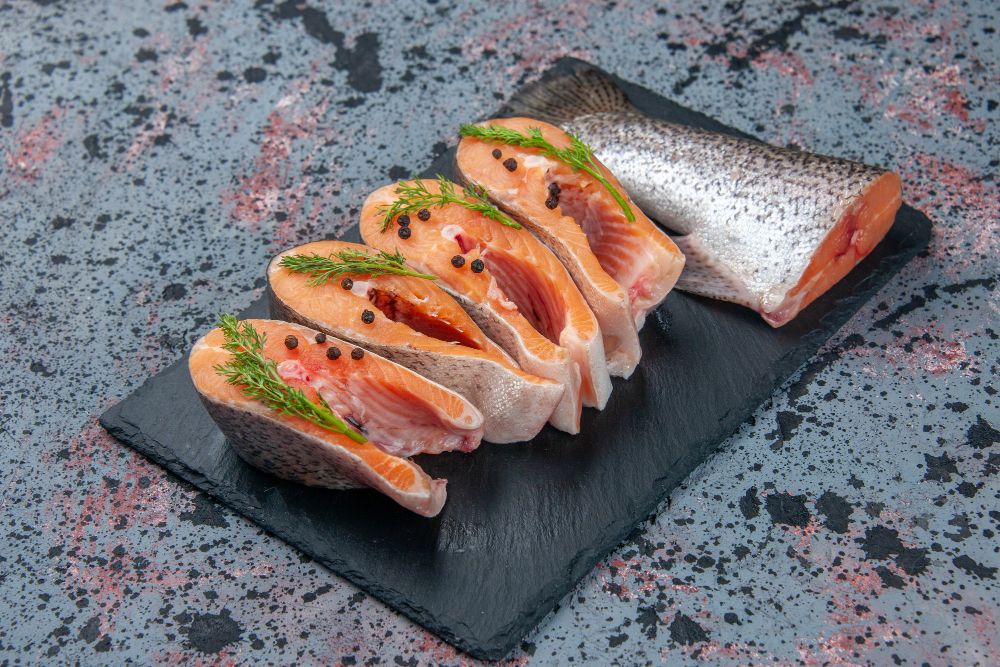
Author: Natalie Ng|Updated: 13 May 2025
Potassium is an essential mineral that supports your muscles, nerves, and blood pressure. Most people get some through food, but many still don’t get enough. Low potassium can lead to health problems, while too much from supplements or salt substitutes can be risky for people with kidney disease. Luckily, many foods high in potassium also support fat loss. Leafy greens, beans, fruits, and fish are low in sodium, packed with nutrients, and easy to include in your meals. This article shares 10 potassium-rich foods that help with weight management without raising your sodium levels. Keep reading to find out what to eat and how to get more potassium from real food.

Why potassium supports fat loss
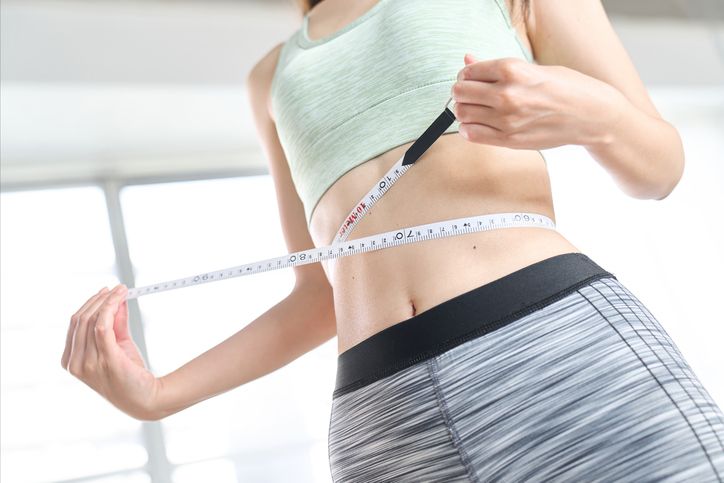
Potassium helps regulate how your body stores and uses energy. It balances fluids, supports muscle function, and helps reduce water retention—all important when you're trying to lose fat without losing strength.
This essential mineral also helps counter the effects of sodium, which can lead to bloating and high blood pressure if left unchecked. By choosing foods high in potassium, you support proper hydration, better digestion, and steady energy. These small shifts in how your body works can make it easier to manage weight without relying on supplements.
Potassium helps your muscles contract efficiently during workouts, supports nerve signals, and plays a part in breaking down carbohydrates. These behind-the-scenes functions are key to keeping your metabolism steady and your body moving well during fat loss.
Now that you know why potassium plays such an important role in weight loss and energy balance, the next step is choosing the right foods to add to your diet. Luckily, many everyday ingredients are not only high in potassium but also low in calories, rich in other nutrients, and easy to work into your meals. Let’s start with one of the simplest and most versatile options.

Spinach supports fat loss and adds potassium without extra calories
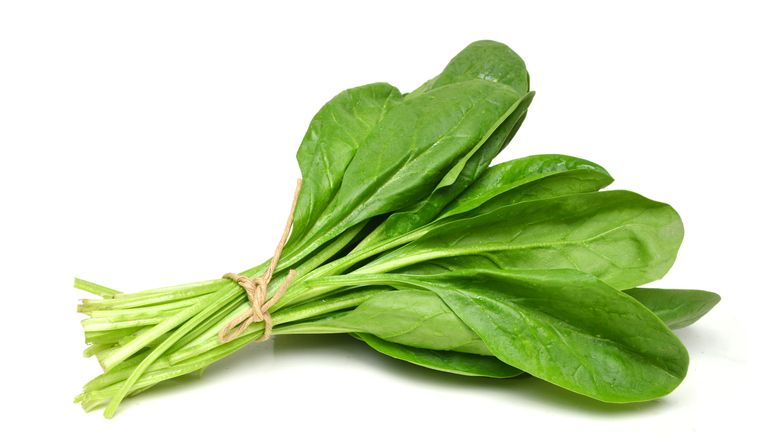
A light and efficient source of potassium
Spinach is one of the most effective leafy greens for increasing potassium intake without adding many calories. One cup of raw spinach has about 167 mg of potassium and only 7 calories. It’s a simple way to include more high potassium foods in your diet while keeping things light.
Cooked spinach packs more potassium
Cooking reduces spinach’s volume, which concentrates its potassium. A half cup of cooked spinach gives more potassium than raw in a smaller portion, making it easier to meet daily needs. This is useful for people avoiding potassium deficiency without turning to a potassium supplement.
Ways to include spinach
Spinach blends easily into smoothies, works as a salad base, fits into wraps, or cooks down into sides. It’s also rich in iron, magnesium, vitamin K, and other nutrients that support blood pressure, muscles, and heart health. It’s naturally low in sodium and fat, making it a smart pick for healthy people watching their weight and avoiding salt substitutes or excess saturated fat.
Read More
Book Now to Experience
S6 Body Sculpting Treatment
1 Minute Self-Registration
Date should not be before minimal date

White beans add plant protein and potassium without extra calories
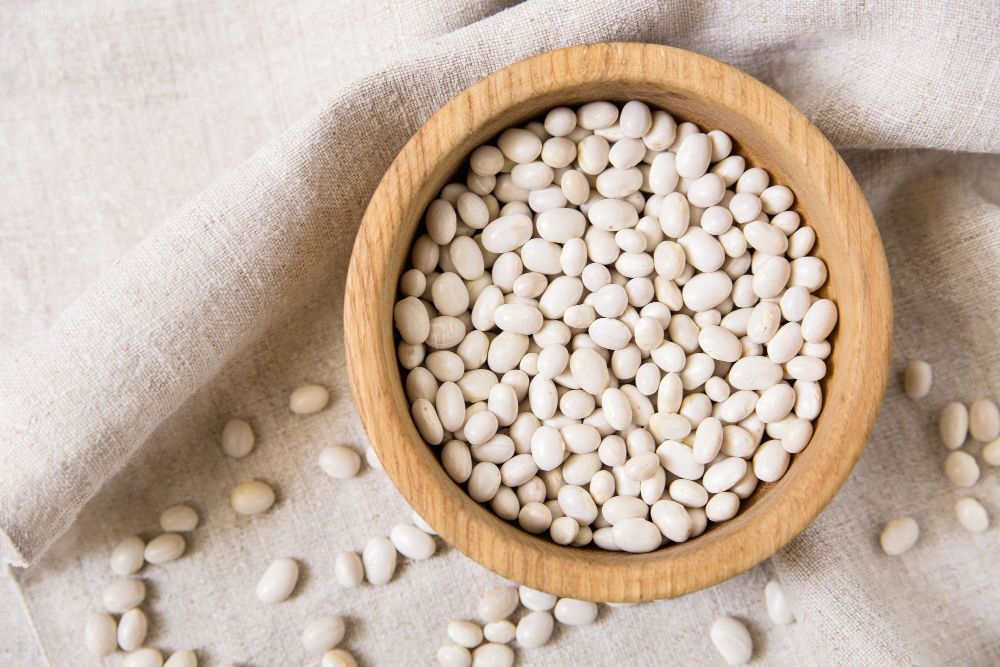
A potassium-rich choice that supports your goals
White beans offer around 595 mg of potassium per cooked cup, making them one of the best plant-based sources of this essential mineral. Even a half cup gives nearly 300 mg. That’s a strong contribution to daily potassium intake, especially for healthy people aiming to avoid potassium deficiency without relying on supplements.
If possible, cook them from dry instead of using canned varieties. This helps preserve more of their natural nutrients and keeps added sodium out of your diet.
Supports appetite control and muscle maintenance
Each cup also provides about 15 grams of protein and 11 grams of fiber. This combination helps you feel full for longer, supports muscle recovery, and keeps blood sugar levels steady. White beans are naturally low in saturated fat and contain no cholesterol, making them a smart choice for heart health and weight control.
Simple ways to include them in meals
White beans work in almost any dish—stir them into soups, toss them into salads, or blend them into dips. They keep their shape and texture, so they're ideal for prepping in larger batches. A quarter cup can boost the nutrition of a meal without adding much to your calorie count.
They’re an easy, affordable way to add extra potassium, fiber, and protein to your diet—especially if you're focused on fat loss and keeping meals nutrient-dense.

Sweet Potatoes offer potassium and long-lasting energy
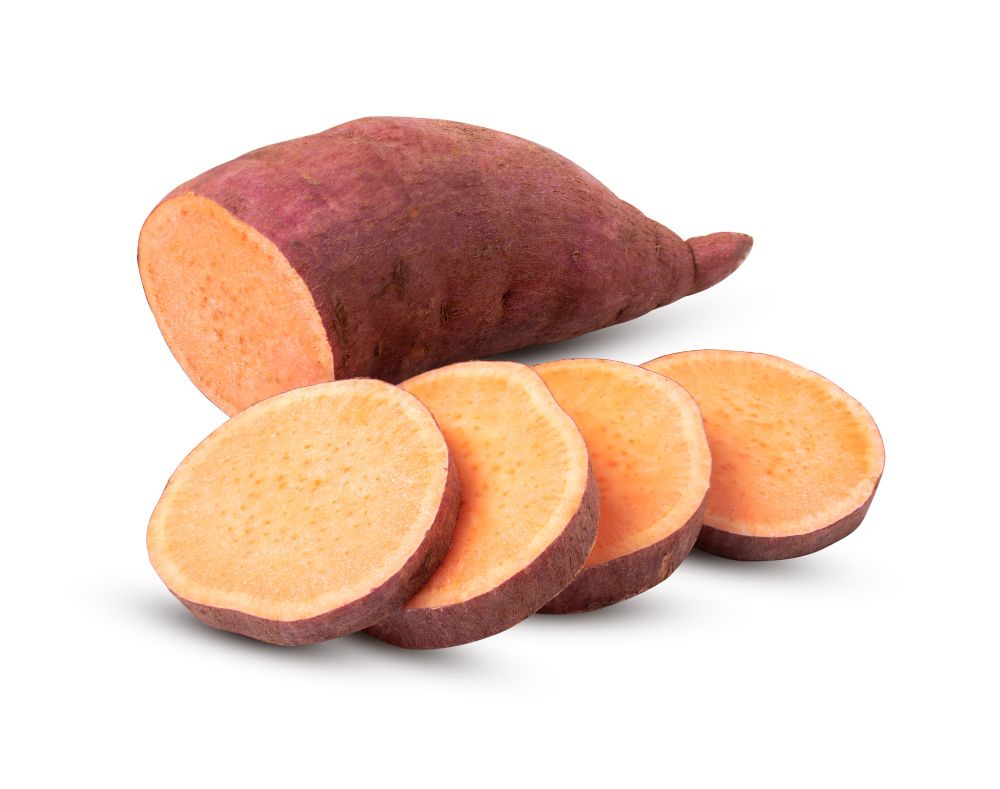
A natural source of complex carbs and potassium
One medium sweet potato contains around 950 mg of potassium, which covers about 20% of your daily needs. This makes sweet potatoes one of the highest potassium vegetables available. They’re also naturally low in sodium and cholesterol-free, helping support blood pressure and heart health without relying on dietary supplements or salt substitutes.
Helps you stay full without spiking blood sugar
Sweet potatoes are rich in complex carbohydrates and fiber. Each medium-sized one provides about 4 grams of fiber, which supports digestion and slows down the release of sugars into the bloodstream. This helps avoid the blood sugar spikes that can make it harder to manage weight or feel satisfied after eating.
Their natural sweetness comes from slow-digesting carbs that provide steady energy—making them a good fit for anyone cutting back on processed foods or trying to reduce cravings.
Easy to cook and add to meals
You can bake, steam, or roast sweet potatoes depending on what fits your routine. They're easy to portion out and reheat, which makes them a useful part of weekly meal prep. A half cup of cooked sweet potato can be added to salads, grain bowls, or served as a side.
They also contain other nutrients like vitamin A, vitamin C, and manganese, which support your immune system and metabolism—important for fat loss and overall health.
Book Now to Experience
S6 Body Sculpting Treatment
1 Minute Self-Registration
Date should not be before minimal date

Avocados deliver potassium and healthy fats in one serving
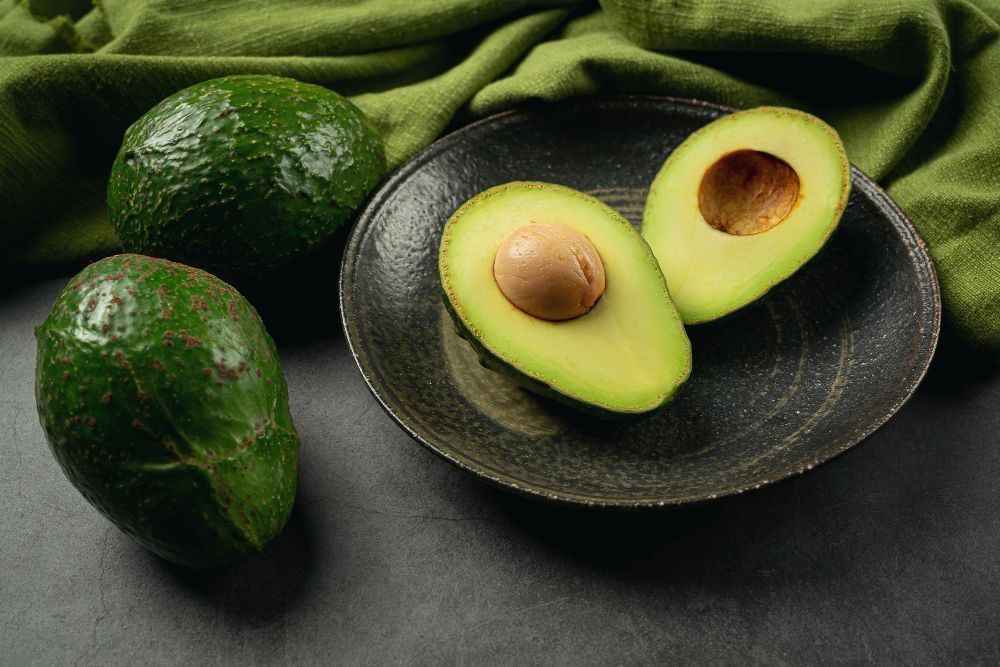
A high potassium fruit with heart-healthy fats
Avocados offer around 485 mg of potassium per 100 grams. That’s about 10% of your daily needs in a small portion, making them one of the most potassium-rich fruits. They’re also naturally low in sodium, which helps support blood pressure and fluid balance—especially important for healthy people aiming to manage weight without raising potassium levels too much.
Fats that support metabolism and reduce cravings
What sets avocados apart is their fat content. A 100-gram serving contains about 15 grams of mostly monounsaturated fats. These fats help keep you full longer and support stable energy levels between meals. That makes avocados useful for fat loss, as they help reduce the need to snack or overeat.
They also provide fiber—about 7 grams per 100 grams—which supports digestion and helps regulate blood sugar.
Add them to meals without overdoing calories
Avocados are calorie-dense, so portion size matters. Use a quarter or half avocado at a time, depending on your needs. You can slice them into grain bowls, mash them onto toast, or blend them into smoothies.
This fruit gives you potassium, healthy fats, and fiber in one serving, making it a nutrient-dense choice for balanced meals focused on fat loss, blood pressure control, and heart health.

Greek Yogurt supports fat loss with protein and potassium
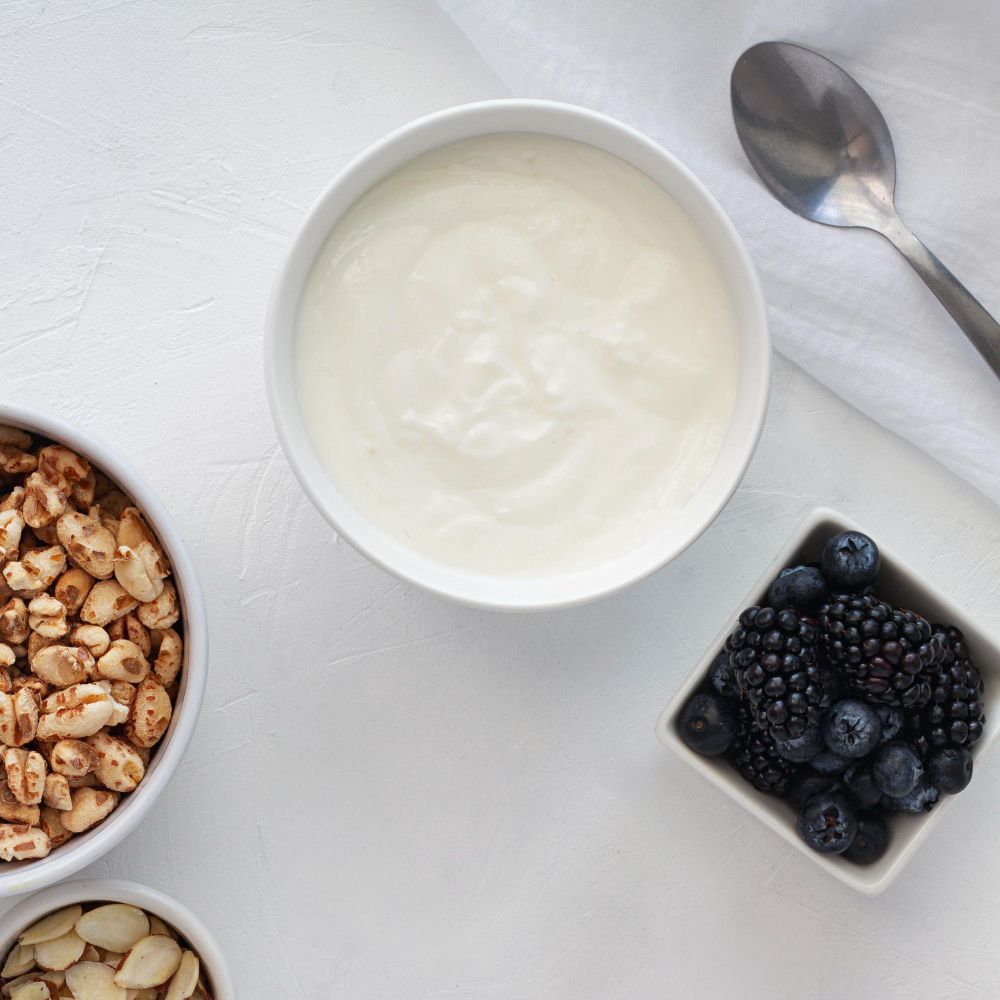
A protein-rich dairy option with steady potassium
Plain Greek yogurt offers about 240 mg of potassium per cup. It’s a useful source for people who want to increase potassium intake without adding too much sodium or saturated fat. Since Greek yogurt is strained, it’s higher in protein and lower in carbs than regular yogurt, which makes it helpful for managing appetite and preserving lean muscle.
Helps control hunger and supports digestion
Each cup provides around 20 grams of protein, which helps you stay full between meals and supports muscle repair during weight loss. Greek yogurt also contains probiotics from fermentation, which may support digestion and gut health—especially helpful if your diet includes a mix of grains, fruits, and vegetables.
Easy ways to include it in your routine
Use Greek yogurt as a base for breakfast with fruit, or swap it for high-sodium condiments like sour cream or mayo in meals. It also works well in smoothies or as a dip. Go for plain, unsweetened varieties to avoid added sugars and stay focused on potassium and protein content.
Greek yogurt is naturally low in sodium, fat free or low fat depending on the variety, and fits into a fat-loss plan that supports potassium levels, muscle health, and digestive balance.
Book Now to Experience
S6 Body Sculpting Treatment
1 Minute Self-Registration
Date should not be before minimal date

Bananas provide quick energy and natural potassium
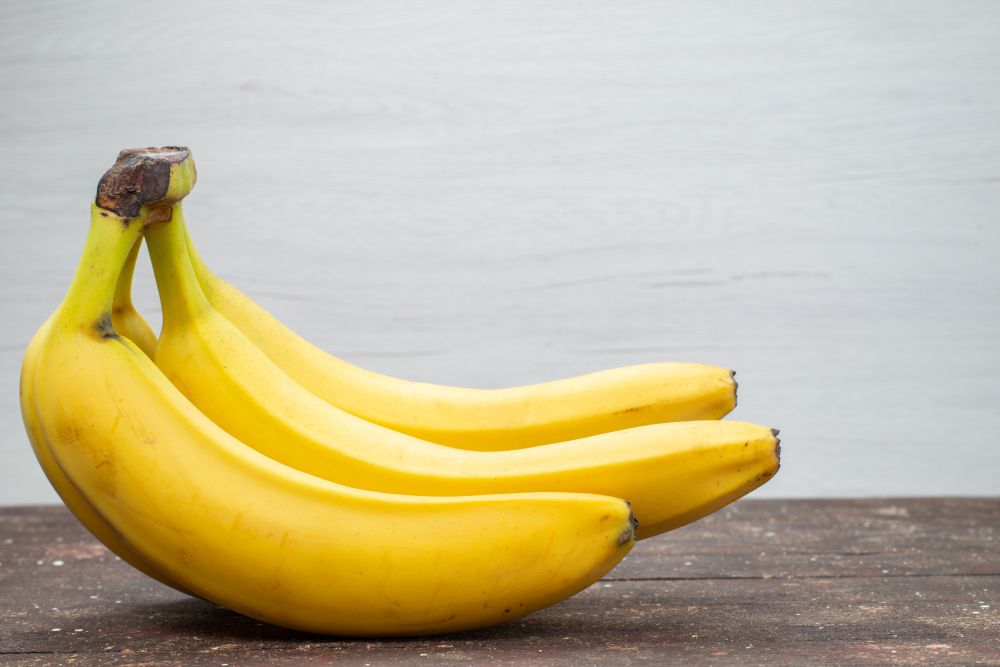
A fast, convenient source of potassium
A medium banana contains about 420 mg of potassium, which supports nerve function, muscle control, and fluid balance. It’s one of the most accessible foods high in potassium, especially for active people who want something fast and easy before a workout.
Bananas are low in sodium and contain no saturated fat, making them a smart option for those managing blood pressure or aiming to avoid potassium deficiency.
Supports energy and digestion before exercise
Bananas provide about 27 grams of carbohydrates, mainly from natural sugars and starch. These carbs break down into glucose and offer steady energy, especially useful before physical activity. Potassium helps prevent muscle cramps and supports electrolyte balance during training.
They also contain fiber—especially resistant starch and pectin—which helps support digestion and promotes gut health without adding heaviness or discomfort before exercise.
How to include bananas in your meals
Eat them as a snack 30 to 60 minutes before working out, or pair them with nut butter for more staying power. You can also slice bananas into oatmeal, yogurt, or smoothies for an easy way to add both potassium and fiber.
With their natural sweetness, steady energy release, and potassium content, bananas are a reliable fruit for supporting workouts, digestion, and daily mineral needs without needing any dietary supplements.

Salmon combines protein, potassium, and omega-3s
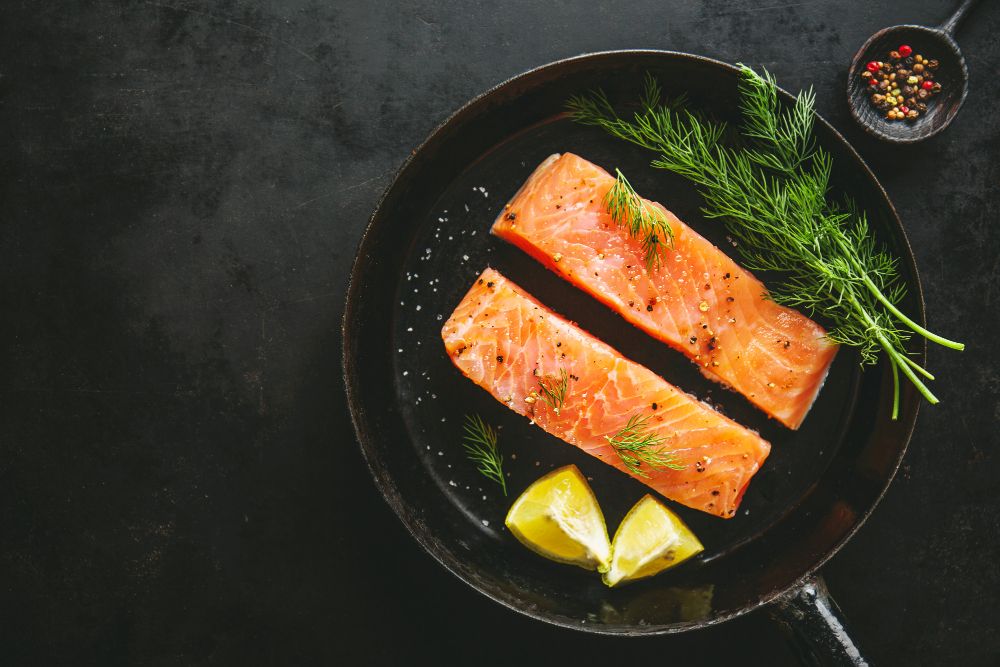
A nutrient-dense fish that supports fat loss
A 6-ounce serving of wild salmon provides around 730 mg of potassium. That’s more than many fruits and vegetables, and it comes with other key nutrients that support heart health and fat metabolism. Salmon is naturally low in sodium and provides high-quality protein, making it a solid choice for people trying to manage weight and blood pressure without using salt substitutes or processed protein sources.
Omega-3s reduce inflammation and support metabolism
Salmon is rich in omega-3 fatty acids, which help reduce inflammation that can interfere with fat loss and overall health. These fats also support healthy blood vessels and may lower the risk of heart disease.
The protein content in salmon—around 38 grams per 6-ounce serving—helps preserve muscle mass during calorie reduction and supports recovery after exercise.
Best ways to prepare and eat salmon
Choose wild-caught salmon when possible, as it typically contains fewer additives and higher nutrient levels than farm-raised options. You can bake, grill, or pan-sear it and pair it with leafy greens or grains for a balanced meal.
Salmon delivers high potassium, healthy fats, and lean protein in one portion, helping support heart health, muscle maintenance, and steady energy without excess sodium or saturated fat.
Book Now to Experience
S6 Body Sculpting Treatment
1 Minute Self-Registration
Date should not be before minimal date

Watermelon supports hydration and potassium balance
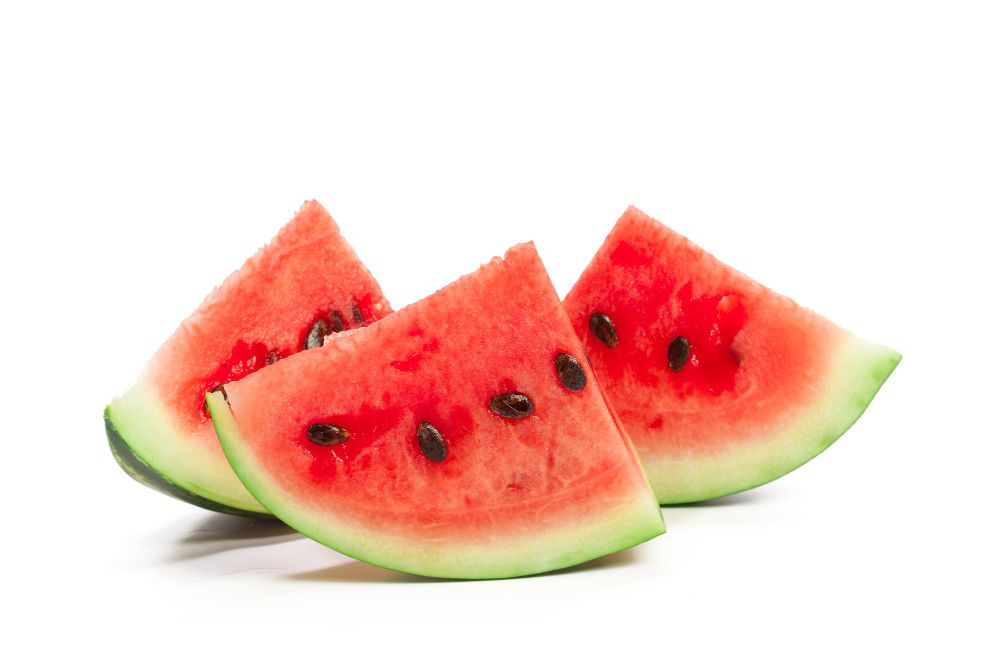
A low-calorie fruit that helps reduce water retention
Watermelon contains about 170 mg of potassium per cup and is made up of over 90% water. While it’s not as high in potassium as other foods, its hydrating effect and natural electrolyte balance make it helpful for managing bloating and keeping fluid levels stable—especially during hot weather or active days.
Its combination of water and potassium helps reduce mild water retention without relying on salt substitutes or synthetic diuretics.
Natural energy with minimal calories
A cup of watermelon has just 46 calories, making it one of the lowest-calorie foods high in potassium. Its natural sweetness satisfies sugar cravings without leading to blood sugar spikes, which helps with portion control and steady energy levels.
Watermelon also contains citrulline, an amino acid that may support kidney function and blood flow, contributing to overall heart health and proper hydration.
Easy ways to enjoy it
Eat watermelon chilled on its own, or mix it with other fruits for a refreshing snack or light dessert. A quarter cup can be added to salads or smoothies if you're trying to limit sugar but still want potassium and hydration.
Watermelon is a simple, satisfying way to add extra potassium to your diet while staying hydrated and supporting weight loss without adding excess calories or sodium.

Acorn squash adds potassium and fiber in a filling side
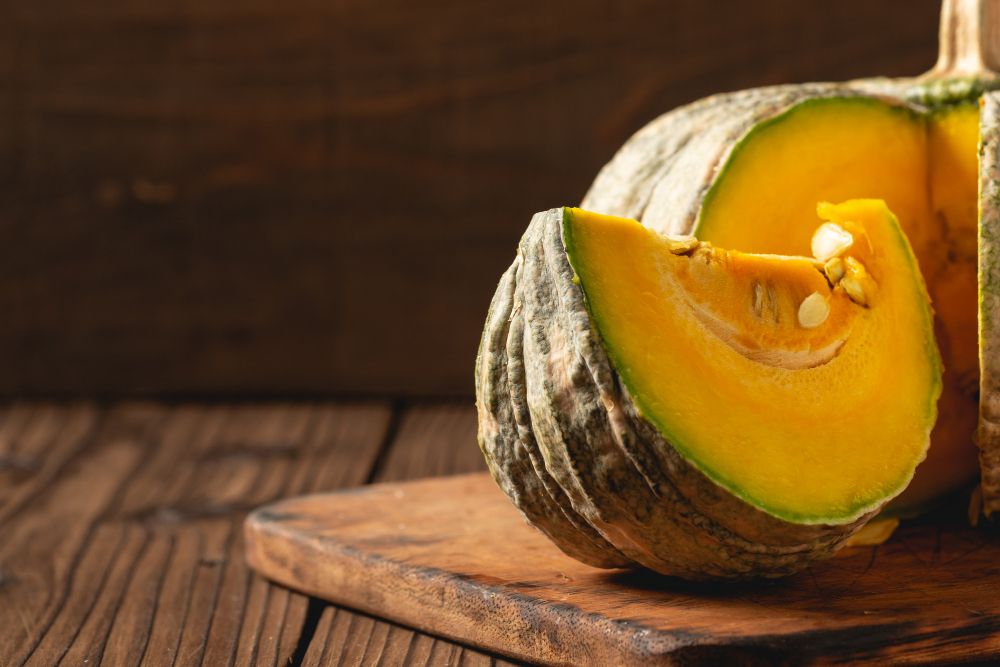
A high potassium vegetable that supports fullness
One cooked cup of acorn squash delivers around 896 mg of potassium—nearly 20% of your daily needs. It’s one of the best sources of potassium among winter squash varieties. Acorn squash is low in sodium and provides slow-digesting carbohydrates, which help support blood pressure and reduce the need for potassium supplements or processed alternatives.
Fiber supports appetite control and digestion
Acorn squash contains about 9 grams of fiber per cooked cup. This helps promote steady digestion, prevent blood sugar spikes, and keep you full longer. Its fiber content makes it useful for weight management while also supporting gut health and reducing the risk of chronic diseases.
The natural sweetness and soft texture also make it easier to include in meals without the need for added sugars or high-calorie toppings.
Simple to prepare and include in meals
Bake or roast acorn squash halves, or cube it for soups and stews. Its texture holds up well after cooking, making it ideal for meal prep. You can also stuff baked squash with grains, beans, or vegetables for a complete, nutrient-dense dish.
With high potassium, fiber, and a satisfying texture, acorn squash is a versatile and overlooked option that fits well into a fat-loss diet focused on whole foods and steady energy.
Book Now to Experience
S6 Body Sculpting Treatment
1 Minute Self-Registration
Date should not be before minimal date

Coconut water adds light potassium and supports hydration
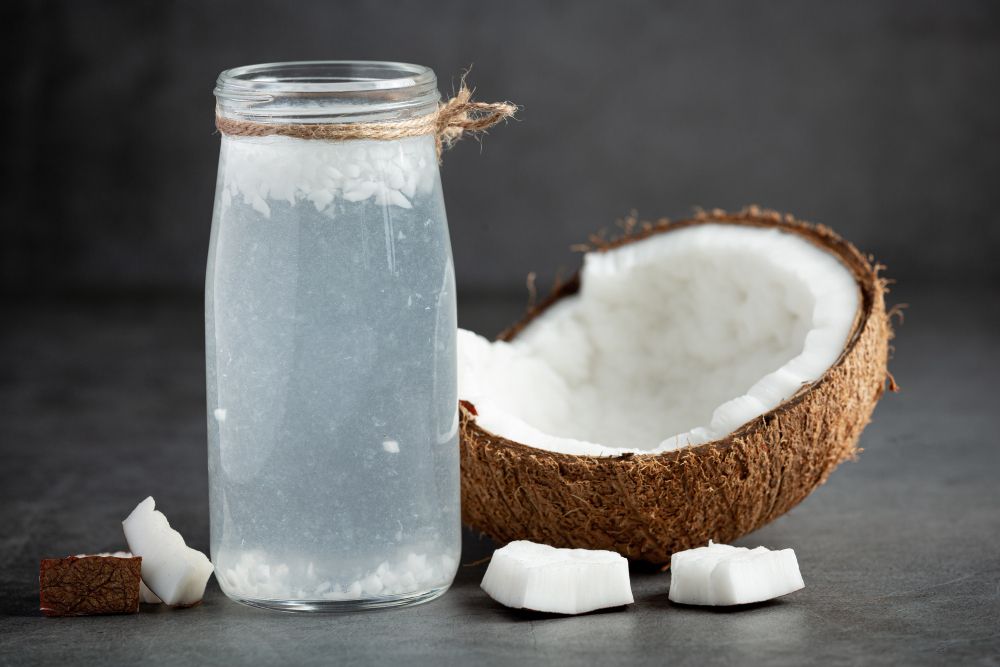
Balanced electrolytes from a natural drink
Coconut water provides around 600 mg of potassium per cup, along with small amounts of sodium, magnesium, and calcium. This combination helps maintain fluid balance, especially after physical activity or heat exposure. It’s a lower-sodium alternative to sports drinks and can support potassium intake for most healthy people.
Limits of coconut water in a high potassium diet
While it offers hydration and some minerals, coconut water isn’t a strong replacement for whole foods high in potassium. It has fewer nutrients and contains natural sugars that add to your daily intake. One cup has roughly 46 calories, which adds up if you're drinking it regularly during fat loss.
Best times to include coconut water
Coconut water works well after workouts or on hot days when rehydration is needed. Choose unsweetened versions to avoid added sugars, and don’t rely on it as your main potassium source.
For long-term weight management and potassium balance, whole foods like vegetables, fruits, beans, and fish provide more nutrients with greater impact. Coconut water offers light support but works best alongside a potassium-rich diet.

Impact of low potassium on health

When your diet lacks enough potassium, your body can’t work as efficiently. Low potassium levels—called hypokalemia—may cause muscle weakness, fatigue, or irregular heartbeat. Over time, it can lead to more serious problems like high blood pressure, kidney stones, or heart disease.
Most people don’t need a potassium supplement, but not getting enough from food can still cause issues. Adding more high potassium foods to your meals is the most effective way to avoid deficiency without the risk of getting too much.
Book Now to Experience
S6 Body Sculpting Treatment
1 Minute Self-Registration
Date should not be before minimal date

Simple ways to eat more potassium-rich foods
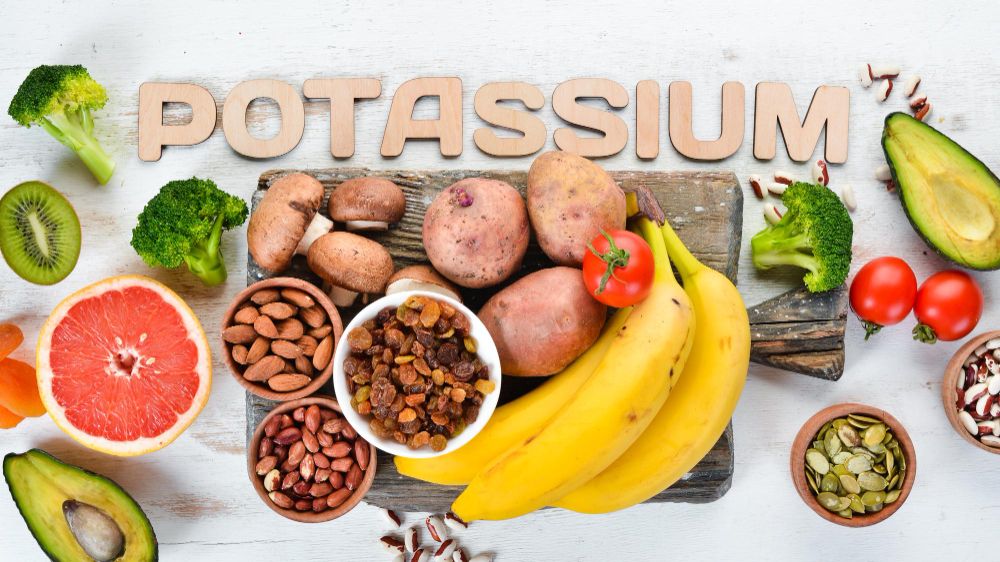
You don’t need major changes to get more potassium—just small swaps and better choices.
• Add leafy greens like spinach or cooked kale to your lunch or dinner
• Replace processed carbs with sweet potatoes or winter squash
• Mix beans or lentils into salads, soups, or rice dishes
• Use Greek yogurt or soy milk instead of high-sodium dressings or sauces
• Choose fruit like bananas, avocado, or watermelon as snacks
• Try cooking from scratch more often to reduce sodium and increase potassium levels
These changes support better hydration, fewer cravings, and a more balanced diet—especially if you're managing blood pressure or focusing on fat loss.

Support fat loss with real food—and boost results with S6 Body Sculpting treatment
For most healthy people, getting enough potassium from food is the most effective way to support fat loss, digestion, muscle function, and blood pressure. A balanced diet built on fruits, vegetables, beans, fish, and dairy gives your body the nutrients it needs to work efficiently—without depending on potassium supplements or salt substitutes.
But for those looking to take their fat loss efforts a step further, treatments like S6 Body Sculpting can help. This non-surgical body contouring treatment uses low-energy bio-laser and vacuum suction technology to target stubborn subcutaneous fat in key areas like the belly, thighs, arms, and back—places where diet and exercise alone often don’t work fast enough.
How S6 Body Sculpting works
The treatment begins with a personalized body and fat distribution analysis. Then, targeted laser energy breaks down fat cells, which are removed through your lymphatic system. At the same time, vacuum suction helps speed up fat metabolism while improving circulation. The laser also stimulates collagen production, which helps tighten skin as the fat reduces—avoiding loose or sagging tissue.
Why it's a helpful addition
• Focuses on specific fat-prone areas that resist diet and workouts
• Non-invasive and gentle—no surgery, injections, or recovery time
• Encourages skin firmness while reducing fat
• Complements a nutrient-rich, high potassium diet by supporting visible body contouring results
While a potassium-rich diet keeps your body working from the inside, S6 Body Sculpting Treatment supports visible shaping from the outside—without stress, downtime, or strict routines.
Book your S6 Body Sculpting session today and give your fat loss efforts a natural boost—inside and out.
New Beauty's S6 Body Sculpting TreatmentBook Now to Experience
S6 Body Sculpting Treatment
1 Minute Self-Registration
Date should not be before minimal date
FAQ
Can potassium levels affect weight gain?
Yes, low potassium levels can indirectly contribute to weight gain. When potassium is too low, it can cause fatigue, poor muscle function, and water retention. These symptoms may lead to reduced physical activity and slower metabolism. Over time, this imbalance may make it harder to burn calories efficiently, leading to weight changes. Eating potassium-rich foods helps support natural energy and fluid balance, which are both important for managing weight.
Is it safe to use salt substitutes to increase potassium intake?
Salt substitutes often contain potassium chloride and are marketed as a way to reduce sodium intake. While they can help increase potassium levels, they aren't suitable for everyone—especially people with kidney disease or those taking medications that affect potassium balance. For most healthy people, it's safer to rely on whole food sources of potassium like vegetables, beans, fruits, and dairy rather than using processed alternatives.
Can potassium supplements replace high potassium foods?
Potassium supplements may help in some medical situations, but they don’t provide the same nutritional value as potassium-rich foods. Whole foods offer a full range of other nutrients like fiber, antioxidants, magnesium, and vitamins, which support digestion, heart health, and long-term fat loss. Supplements also carry a higher risk of causing too much potassium, especially if not monitored by a doctor. Most people get better results by improving their diet rather than relying on tablets.
Are there drinks that are naturally high in potassium besides coconut water?
Yes. Besides coconut water, some other drinks naturally contain potassium. These include soy milk, orange juice, tomato juice, and certain vegetable-based broths. Just keep an eye on sodium and added sugars. Soy milk, in particular, is a good plant-based source that often includes added calcium and vitamin D, making it a useful part of a balanced diet when you're increasing potassium intake.
Can a high potassium diet reduce the risk of chronic diseases?
A diet rich in potassium is linked to lower risks of chronic diseases like heart disease, high blood pressure, and kidney stones. Potassium helps relax blood vessels, remove excess sodium through urine, and support overall fluid balance. Over time, these effects help reduce strain on the heart and kidneys. Including enough potassium from food can also reduce the likelihood of developing conditions linked to inflammation and poor circulation.
Recommended Articles
COPYRIGHT© NEW BEAUTY MANAGEMENT LIMITED 2025. ALL RIGHT RESERVED.




